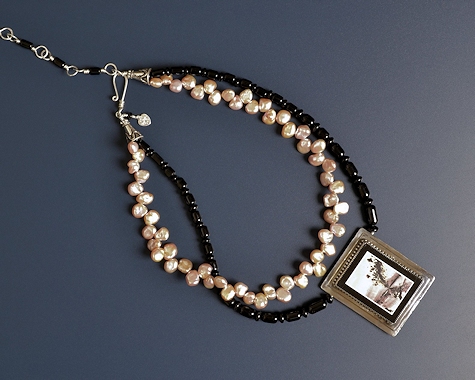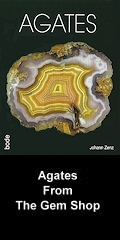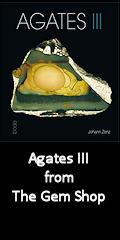Gibbs shows photos of what he calls "Porcelain Jasper" from Sonora Mexico. He labels it "one of the most named and renamed jaspers on the market." Perhaps we should clarify, however, lest the statement leave the wrong impression. Philip Stevenson has a most interesting article on Willow Creek Jasper (including photos of the mining location) which he calls "one of finest porcelain jaspers in the world." So "porcelain" actually describes a whole category of jaspers, including Bruneau, which take a gorgeous high polish. He calls Willow Creek and Bruneau, "the purest porcelain of the porcelain jaspers." Now clearly this stone is not Bruneau, and it isn't the Sonora jasper either. It is likely Willow Creek Jasper both from its color and as I have also purchased gorgeous Willow Creek rough from Gene. Both Gene and Philip are well known for offering the highest quality rough. (Gene was profiled in the first Zenz book, Agates; Philip in Agates III. Agates III provides a fascinating article on Willow Creek as well. Zenz can't seem to ignore the jaspers any longer, they have slowly crept into his masterworks on agates! We pressed him in Tucson this year about more books... the dear man can't seem to satisfy those of us who want more information and more gorgeous photos!)
Willow Creek forms in the center of thundereggs near Eagle, Idaho. It is unusual because of its delicate, creamy pale mauves and purples which show up better in the detail shot of this piece. Gibbs and Stevenson both mention iron staining, Phillip goes on to describe and show photos of the dreaded orange iron pits in Willow Creek. However I don't think our beautiful tree is from iron deposits because it isn't orange. I assumed the tree consisted of dendrites of manganese oxide but the growth patterns in the tree image don't quite look like dendrites since they appear to have been daubed on by a master painter rather than having grown by branching. Or perhaps this appearance is an artifact of the way the stone was cut. Whatever the mineralogy of this stone, its beauty is the astounding thing. For me, Beauty, as one of the Transcendentals, will always trump our science, wondrous and fascinating as it is. I love science best when it reveals the Beauty of creation. So what do you think? Is Beauty an artifact of our perceptual system? Or is it somehow prior?










